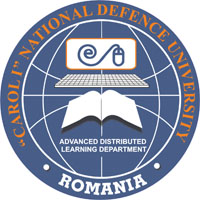SMART PHONE APPS AS A SOURCE OF INFORMATION FOR STUDENTS
SMART PHONE APPS AS A SOURCE OF INFORMATION FOR STUDENTS
Author(s): Tatjana M. Vulić, Marta S. MitrovićSubject(s): Education
Published by: Carol I National Defence University Publishing House
Keywords: smart phones; mass-media; students; information; applications
Summary/Abstract: The market of smart phones experienced tremendous expansion during the mid and late 2000s and greatly influenced the changes in all spheres of life. Since mobile technologies continue to evolve, no one is able to predict with certainty the future shape of communication channels and which one will be preferred by the young. The aim of this paper is to investigate the attitudes of young people, particularly students of the Faculty of Philosophy, and to analyze different ways of obtaining information. Basic research instrument was a questionnaire specially designed for the purpose of this study. The survey was conducted on a sample of 159 students: 70 respondents from the Department of Journalism, 45 respondents from the Department of Sociology and 44 respondents from the Department of Psychology. The results have shown that all participants (100%) own at least one mobile phone, and 80.56% own a smart phone. From the group of students who own a smart phone, most of them identified it as a primary device through which they get information. In accordance with the established hypothesis, the survey results show that journalism students are more interested in following the news, while students from other Departments are more appealed to entertainment information (social networks, music ...). The results reveal their preferences: the most popular news application is "Blic", which is Android application from one of the most popular daily newspaper, and which was the first of its kind on the market, while only 20.69% use the application of Serbian Public media service. The research reveals that young people do not use any media application from the region,even though there are almost no language barriers for monitoring news (Bosnia and Croatia), but it is encouraging that 10% follow the news through the application of BBC and CNN network.
Journal: Conference proceedings of »eLearning and Software for Education« (eLSE)
- Issue Year: 11/2015
- Issue No: 01
- Page Range: 320-326
- Page Count: 7

